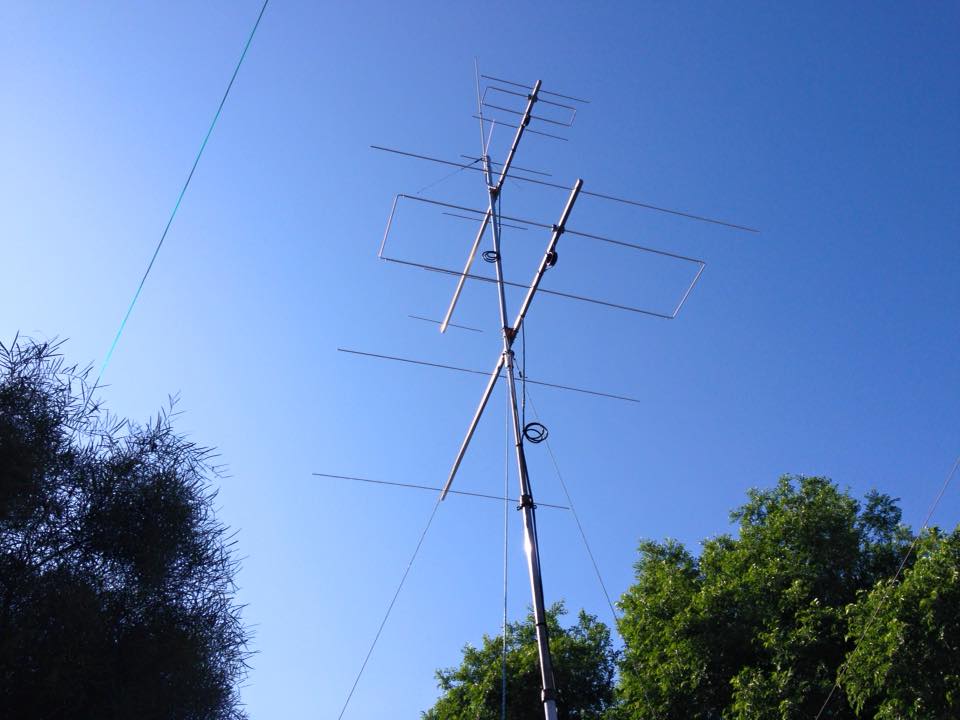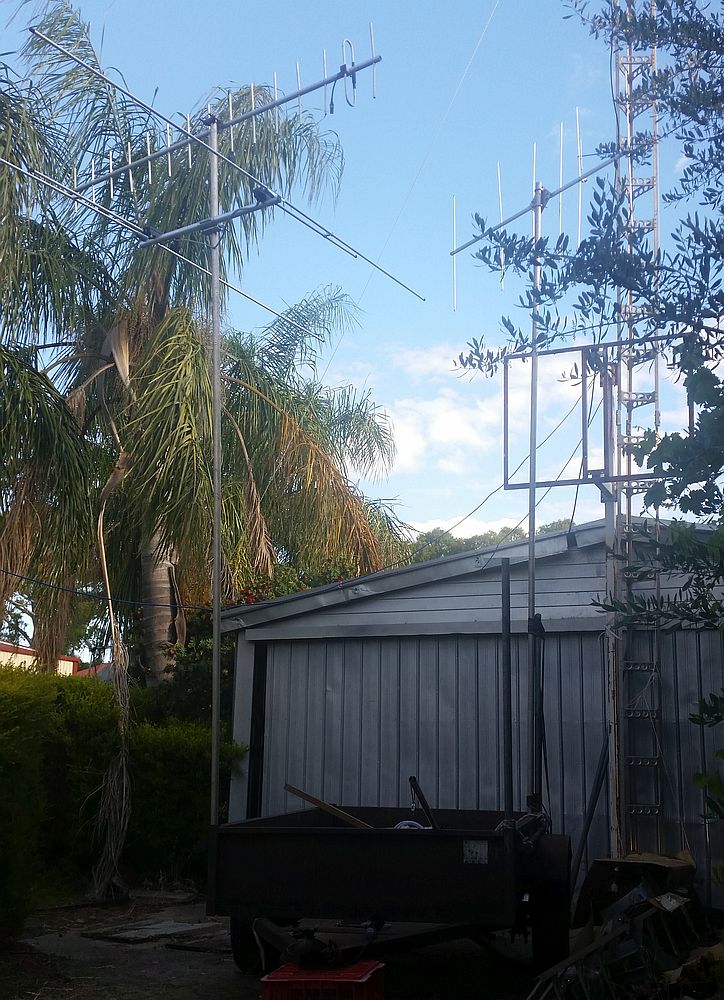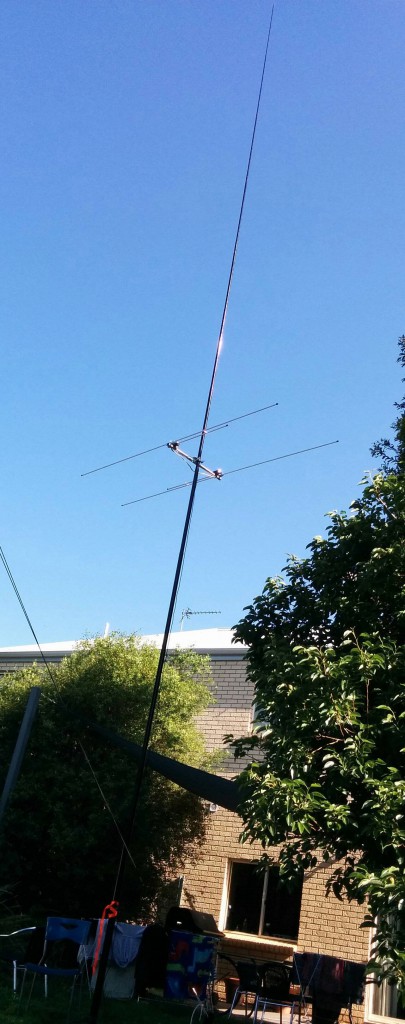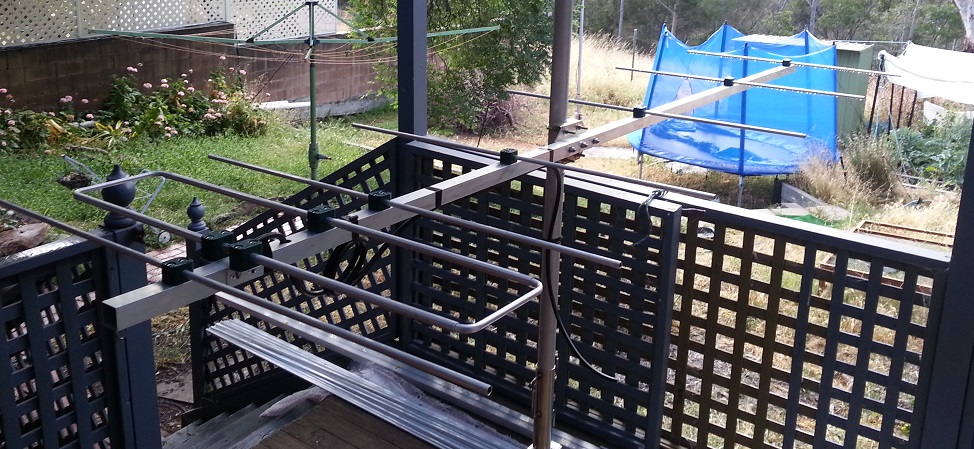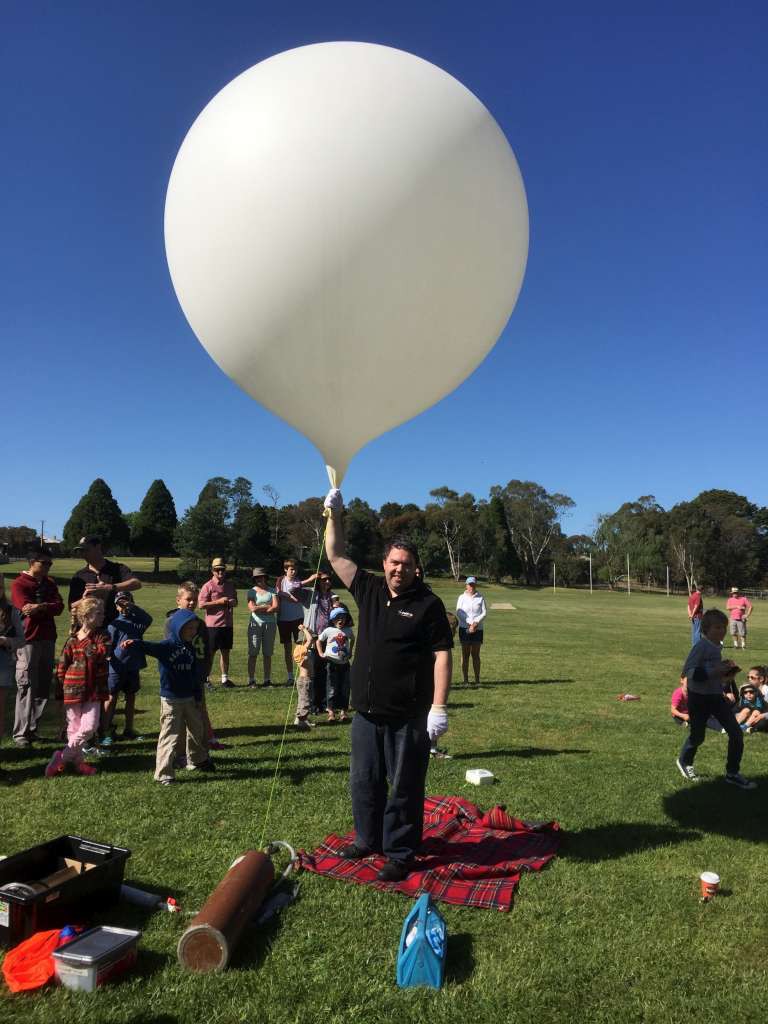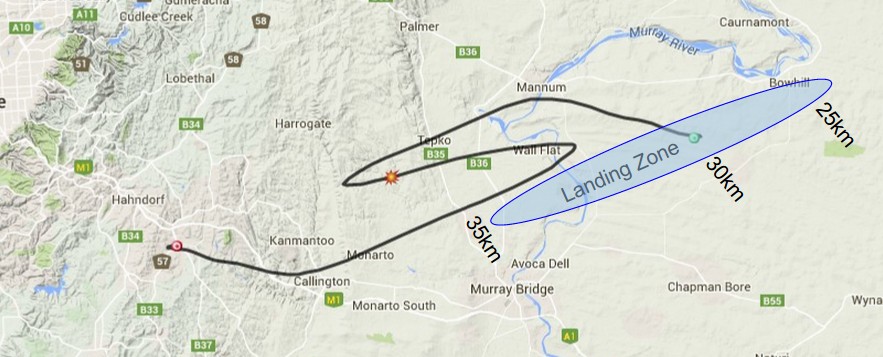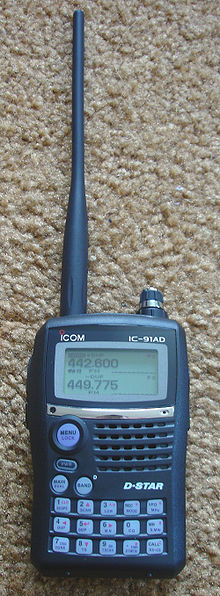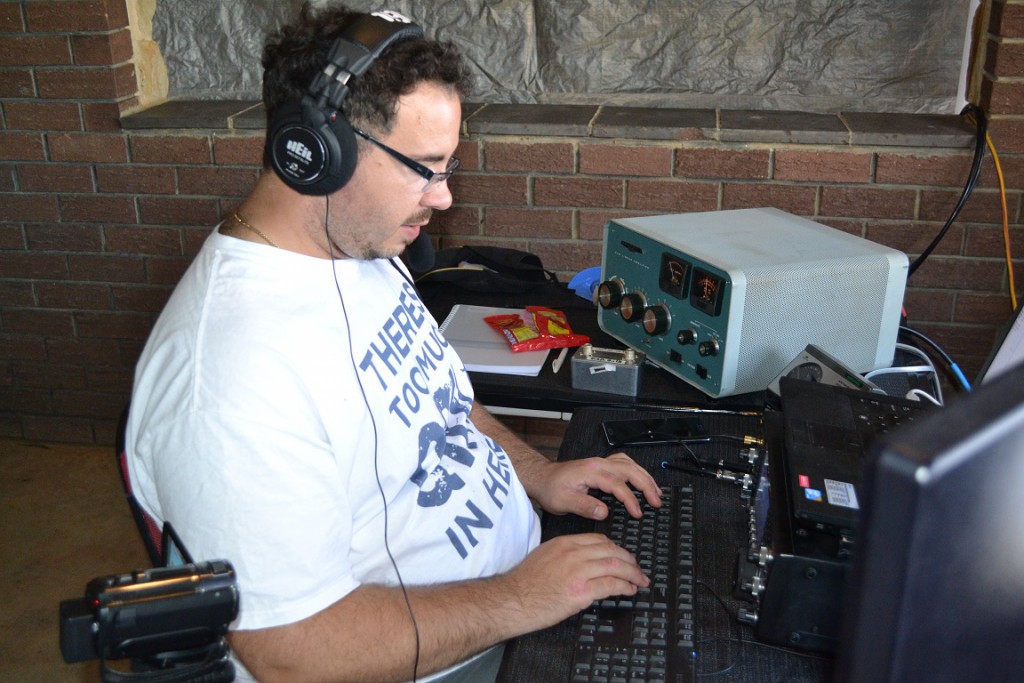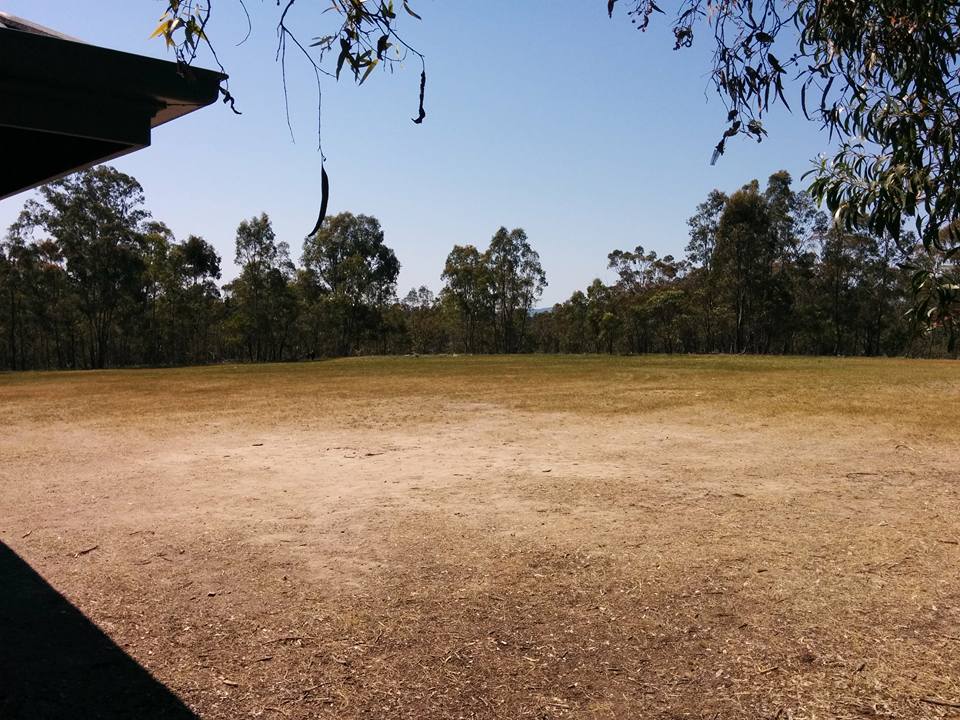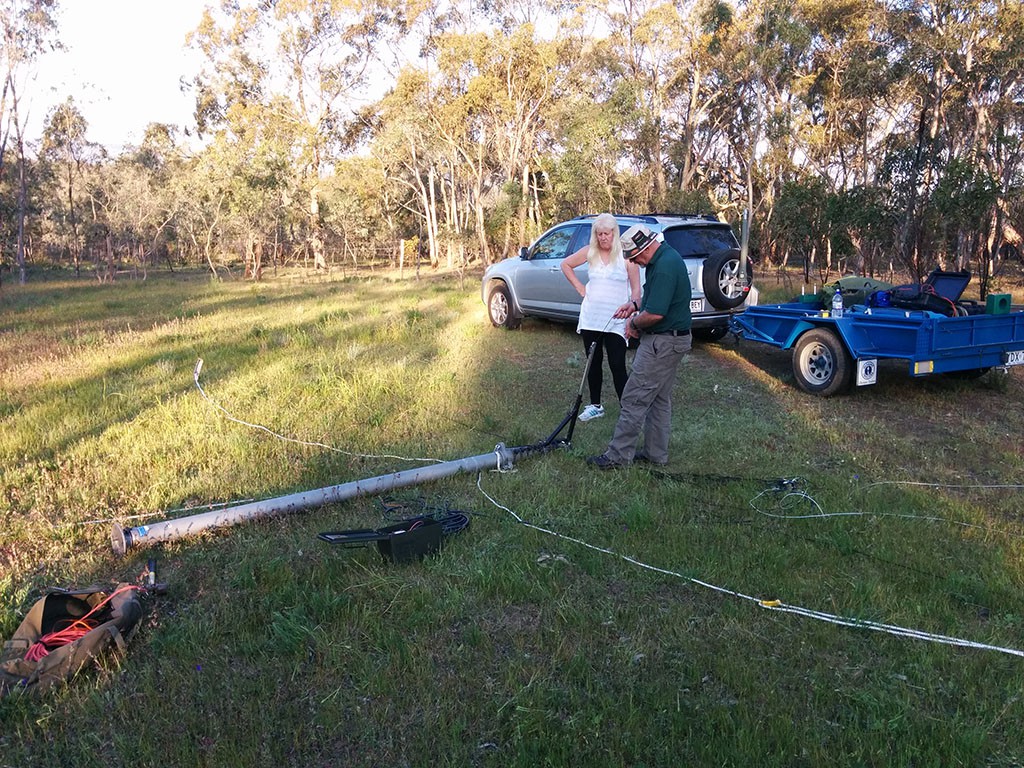AREG and the Spring VHF/UHF Field Day 14/15th November
Recently with the HF conditions deteriorating the operating interests of a number of club members has been switching to VHF/UHF. To help get their VHF/UHF stations “tuned up” for portable operation, a number of members are taking the opportunity to participate this year in the WIA Spring VHF/UHF Contest.
AREG members haven’t actively participated in this contest for a few years now so this marks a return to these bands for quite a few of us.
About the Contest (Extract from the WIA Website)
The VHF-UHF Field Days provide VHF-UHF operators with the opportunity to “head for the hills” and see how far they can work.
The Field Days have separate sections for single and multiple operator stations. The duration of the Field Day is 24 hours, but there are also 8 hour sections for operators who may not be able to camp overnight. Most club stations prefer to operate for the full 24 hours.
The Field Days also generate plenty of activity from home stations, so there is also a separate Home Station section.
All contacts must be simplex: contacts through repeaters or satellites are not allowed. There is plenty of FM activity, but one feature of the Field Days is a high level of SSB activity.
It is possible to do very well with only modest antennas if you pick a good hilltop. Another option, if your station is easily transportable, is to operate from more than one location during the contest period.
Aim Of The Contest
The overriding aim is to get away for the weekend and have fun! But next after that, the aims are:
- to encourage more activity on VHF and microwave bands;
- to encourage people to work greater distances than usual by operating portable, and
- to provide opportunities for people to activate or work into new grid squares.
AREG Involvement
VK5QI, VK5FO and VK5ZM are all preparing stations. Most club members are planning on operating in the 8hr section for the first 8 hours of the contest. Several sites around the Adelaide Hills and metropolitan area are being considered for activations. VK5FO and VK5RR will be operating from Saturday 0100hrs UTC for 8 hours from Ardrossan with:
- 6M – 2 elements (horizontal) and 100W on the IC706. SSB and FM
- 2M – 6 Elements (vertical) and 50W on the IC-7100. SSB/FM AND RTTY
- 70Cm – 17 Elements (vertical) and 50w on the TS-2000. SSB and FM
Bob and Ray should be capable of working most home and portable stations in the Adelaide Metro area and will be running SSB and FM. They will also beam towards Port Pirie, and Pt Lincoln.
VK5QI is also organising a station with Andy VK5AKH and has some “rover” antennas prepared.
The idea of the contest has also inspired Matt VK5ZM to go on an antenna building spree with new 2m and 6m LFA beams built and ready plus a borrowed 70cm 9el antenna to give Matt 70cm capabilities as well.
VK5ZM and VK5FGRY will be headed to Anstey Hill, using a site suggested by Andy AKH. You can find their location here; (VK5ZM Location for the VHF/UHF Field Day.) Gary and Matt are just focusing on 6m, 2m & 70cm (FM/SSB) and Matt will take a 23cm HT (FM) if anyone wants to try, but it will be rubber duck.
They will be located within the Anstey Hill Rec Park with a good elevation (400m) and clear LOS to just about everywhere. The site is a little shadowed to the southern suburbs and vales, but has a good outlook none the less.
Members are certainly welcome if they would like to come and visit VK5ZM and VK5FGRY. Note that parking is along the roadside so use your common sense here please.
It should be a great weekend so look out for these and many other stations participating in the WIA Spring VHF/UHF Field Day!
LaunchBox Horus Balloon Flight 18th October 2015
This weekend was the first Project Horus activity for this year, when we teamed up again with LaunchBox to put a School payload aloft. The students designed a number of experiments and flew them in a payload chassis supplied/organised by LaunchBox. Project Horus then provided tracking telemetry payloads and recovery teams and vehicles plus flight engineering services to the LaunchBox team to enable them to get the student payloads aloft.
The large turnout of students on a Sunday morning showed that there is still plenty of curiosity and interest in science in schools which is great to see! This was especially so considering the types of questions the AREG team was fielding, which bodes well for science education.
Launch Operations
Filling and launching went without a hitch, and the changes to the regulator and filling system that allowed the balloon to be filled in under 5 minutes was a welcome improvement! Thanks Dennis VK5FDEN for helping out with this.
The flight was planned so that recovery would be relatively painless, with the target area being somewhere in the vicinity of Palmer in the Adelaide Hills. This level of control is only possible because of the flight tele-command capability that the team has devised, and plays a big part in the success of these flights for groups like LaunchBox.
Tracking Network
Another major piece of the puzzle was the tracking network. The primary telemetry this flight was based on a 100 Baud 7N2 RTTY signal on 434.450, with a backup trial system using LoRa modulation as an experiment. This telemetry, apart from being received in the tracking chase cars, is also collected by a large number of Amateur Radio ground stations across South Australia. These stations make a major contribution to the project through collecting and feeding the balloon telemetry into the Internet. This is then accessed from our chase vehicles over 3G/4G cellular links and adds to our own data. It is a great way of getting involved, even if you are not out in the field.
Michael VK5ZEA and Peter VK5KX posted the following pictures of their setups and what they saw at various stages throughout the flight.
Others contributing to the tracking included numerous stations in Adelaide; VK5ALX and VK5NEX in Whyalla, and VK3BQ, VK3SMC and VK3KCX in Melbourne.
Flight Statistics
To control the landing zone, the flight itself was terminated early using the Horus tele-command system. (Had we waited in this case for the balloon to burst, it is quite possible it may have landed much closer to heavily populated areas, something we do our utmost to avoid). The final flight statistics are therefore as follows:
[table “” not found /]Recovery
Recovery went smoothly with both chase teams waiting patiently for landing approximately 1km from touch down. After locating the land-owners and obtaining permission to enter their farm, we were able to walk in about 600m and collect the payloads.
The main payload has several experiments including cameras, a weather station, and other interesting ideas contributed from students to answer questions like “what does happen to a marshmallow and popcorn when you place it in a freezing near vacuum?”
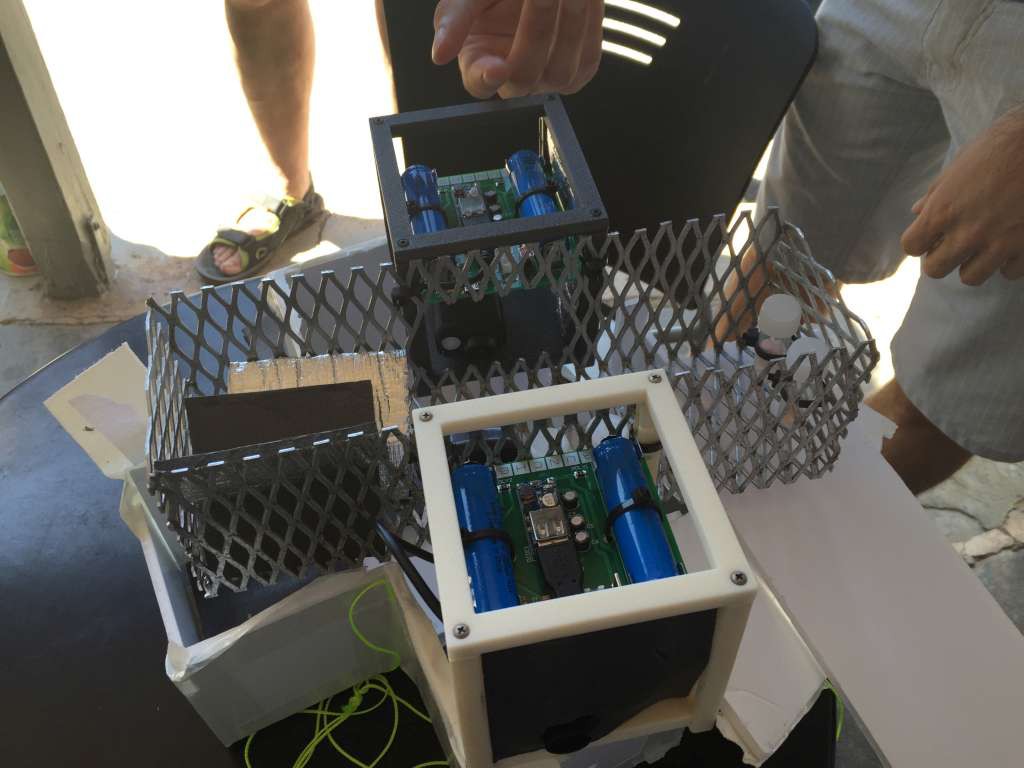
LaunchBox Schools Payload
Conclusion
The day ended with the LaunchBox and AREG Project Horus chase teams meeting at the Palmer Hotel to hand over the payloads. A job well done everyone, and a great example of using Amateur Radio to further science education in this country!
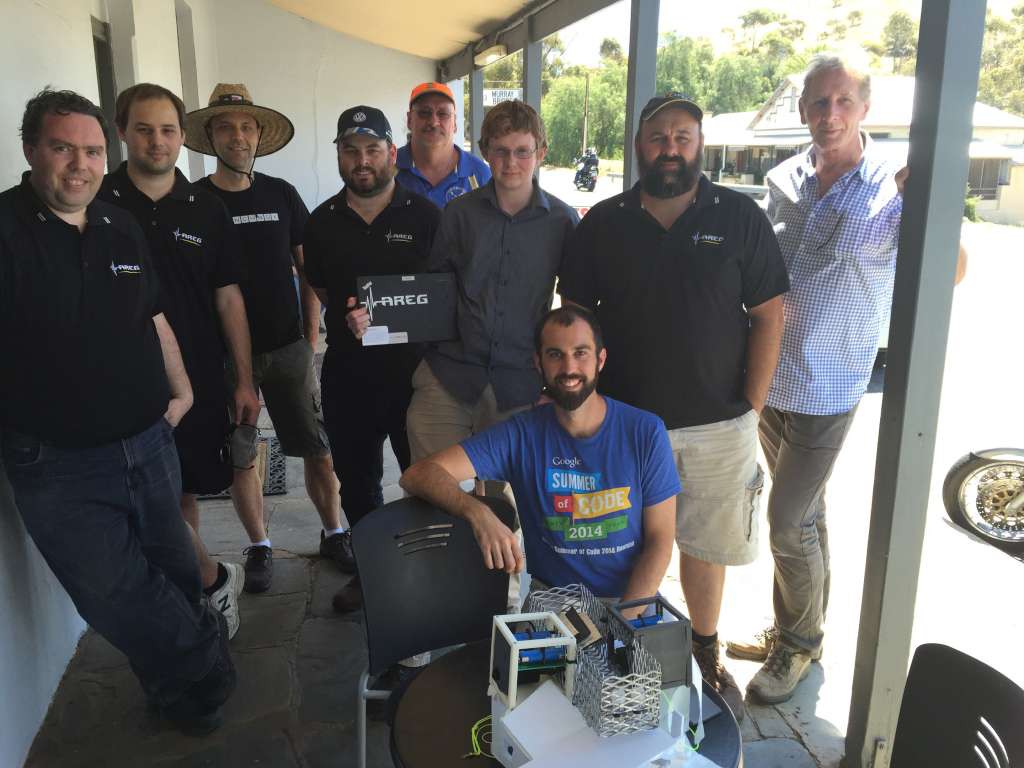
AREG/Project Horus and LaunchBox Crew at the end of the day’s Chase
Again we must say a big thank you also to the HabHub.org community and the UK High Altitude Society who provide balloon tracking and telemetry collection services for projects such as ours across the world.
Stay tuned in the new year as well as there are many more exciting things potentially happening with Project Horus being considered for 2016!
NEWSFLASH: Project Horus Balloon Flight Sun 18th October
On Sunday the 18th of October, at 10am Adelaide time, Project Horus will be conducting a high altitude balloon launch from the Mount Barker area. This launch will be flying payloads designed by Adelaide area high schools, along with the standard Project Horus telemetry payloads. The launch is expected to reach approximately 30km altitude, with telemetry receivable from most of VK3 and VK5. The launch site for this balloon will be closed to the general public due as school children are present, we thank you for your understanding.
Anyone wishing to help track the balloon is invited to listen out on 434.450MHz USB for the RTTY telemetry. This can be decoded with the standard dl-fldigi software.
- Main Telemetry: 100 baud 7N2 Telemetry on 434.450MHz USB +/- drift. Callsign will be VK5ARG-1.
- We will also be flying a cut-down payload and an experimental ‘LoRa’ telemetry payload (431.650MHz).
- An excellent dl-fldigi setup and tracking guide is available here: https://ukhas.org.uk/guides:tracking_guide
The Flight and Payload information for this launch will appear in dl-fldigi on Saturday the 17th. Tracking of the flight will be available on the HabHub Tracker page.
Current predictions, (as of Thursday the 15th), place the landing area somewhere between Pompoota and Bowhill:
16th October Meeting: D*STAR for Beginners
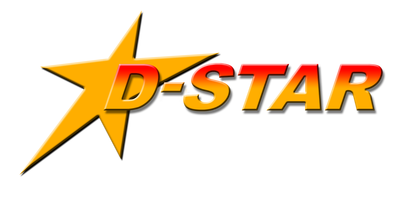 Have you ever wondered how to navigate the myriad of ways to access a D*STAR repeater and make contacts either locally or via the gateways? The come along to the next meeting of the Amateur Radio Experimenters’ Group on Friday October 16th where Ben, VK5BB, will take you through how to get the most from your D*STAR radio when using VK5RWN. He will include information on how to access gateways, reflectors etc and will give you clues on how to set up your D*STAR radio to make the best use of the available network that sits behind the AREG D*STAR repeater.
Have you ever wondered how to navigate the myriad of ways to access a D*STAR repeater and make contacts either locally or via the gateways? The come along to the next meeting of the Amateur Radio Experimenters’ Group on Friday October 16th where Ben, VK5BB, will take you through how to get the most from your D*STAR radio when using VK5RWN. He will include information on how to access gateways, reflectors etc and will give you clues on how to set up your D*STAR radio to make the best use of the available network that sits behind the AREG D*STAR repeater.
So if you are new to D-STAR or would like to know a bit more about how to use D-STAR, here is an opportunity to find out and meet with some D-STAR users.
The meeting will be held at AREG’s club rooms at the Reedbeds Community Hall, Fitch Road, Fulham. The doors will be open at 1930 hours for a meeting start at 2000 hours local summer time.
As well as the formal presentation there will be ample time to meet with AREG members and talk about any and all things Amateur Radio. Visitors are most welcome, so please come along all and say hello! If you need help finding the hall, call on the 439.900 repeater (91.5Hz CTCSS).
Coffee, tea and cake will be on for a light supper, over which guests and members may ragchew on topics of the evening. Put it in your diary, AREG meeting this Friday the 16th October, 7:30 pm!
VK5ARG Oceania DX Contest 2015 Results
Well, the AREG has wound up it’s activities 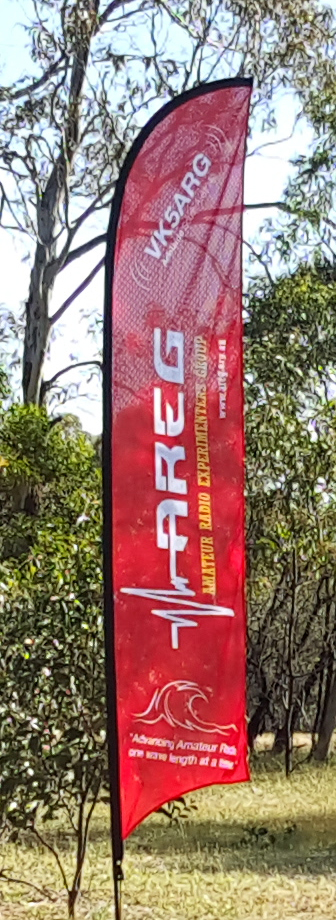 at Para Wirra
at Para Wirra
Recreation Park for this year’s contest. A great deal of fun was had by everyone to participated, even by those who operated under physical duress (two members could hardly walk).
A big thanks to everyone who took part and operated or provided support for the event. In particular (and if we’ve missed you out please let us know and we’ll add you to this list) those who took part in operating the station included: VK5AKH, VK5ZM, VK5QI, VK5KX, VK5FSKS (who flew in from VK3), VK5GR, VK5JO, VK5MTM, VK5UP, and we believe that VK5FGRY was spotted sitting at a few consoles however we’re not sure if he transmitted or not this year (*grin*).
With the Para Wirra CP being so close to Adelaide we were also fortunate to have a large number of visitors which included; Kim VK5FJ, Arno VK5ZAR, Paul VK5JG and Dennis VK5FDEN, Cary VK5CD, Peter VK5APR, Louis VK5FLY and Jess, Wendy, Dean VK5FAIR and Sally VK5FSAM, Brenton VK5BZ, Ben VK5BB, Darin VK5IX and Glenys plus boys, Sharon FSAW and the Moo, Allan VK5MAK, Bob VK5FO and Ray VK5RR.
We also must thank Arno VK5ZAR and Gary VK5FGRY who helped keep the troops fed manning the BBQ and keeping the ants at bay as well as Sharon VK5FSAW who provided dinner on Sunday night. We must also thank all of the visitors that rang ahead and checked if we needed anything, with the weather so warm the bags of ice, drinks and loaves of additional bread were gratefully received.
A big thankyou again to the rangers of Para Wirra Recreation Park (Steve and Mel!) who graciously allowed us to conduct the event inside the park for the 3 days. To find a site so close to Adelaide with such a low HF noise floor is a wondrous thing.
The Results?
Overall our tentative scores were:
[table “” not found /]
[table “” not found /]
Band by Band
80/160m: With changes to the radios this year, it was fantastic to see the contacts and multipliers achieved out of the low band station. Peter VK5KX and the low band crew achieved contacts into ZL on 160m and into the USA on 80m. Well done!
40m: was hard going this year. We lacked enough punch to be heard often in Europe and that cost us many contacts in the early hours of the morning. We did get a few contacts into that part of the world but often it was through multiple repeats and perseverance. The auto keyers got a work over and between Josh VK5JO, Andy VK5AKH, Grant VK5GR, Matt VK5ZM and Mark VK5QI plus other relief operators, we ground out a solid score. The tube amp and dipole did well to the USA – but the fixed orientation wasn’t helping our cause for Europe. More work and ideas planned for this station next year :-)`
20m: at times flew and at others was a grind. Again, punch to get over the European QRM made prefix chasing hard work although a solid result was still achieved with the Elecraft K-line and the Hex Beam. With 40m and 20m being co-located teams were taking turns at each station making further contributions to both stations.
15/10m: The surprise this year was 15m. We again had a Elecraft K-line and a 3-band Spider beam which we ran for the John Moyle Field Day. With that setup and the ionosphere playing the game the crew manning 15m had a huge amount of success. Long runs of Japanese stations as well as a beautiful opening into Europe Saturday night brought a sparkle to Matt VK5ZM, Theo VK5MTM and high band crew’s eyes.
Conclusion
All in all, a great result, a lot of fun and look out for AREG again next year! Meanwhile, ideas for improvements to the station are already circulating, and we wait with bated breath to see how we placed.
A big thank you to the OCDX contest organizing committee for staging the event too. It certainly gave our club the excuse to get out and play portable “Amateur Radio” for the long weekend.
73’s de VK5ARG
The AREG Team ready to go for the Oceania DX Contest
VK5ARG entering Oceania DX Contest: Oct 3rd/4th PORTABLE
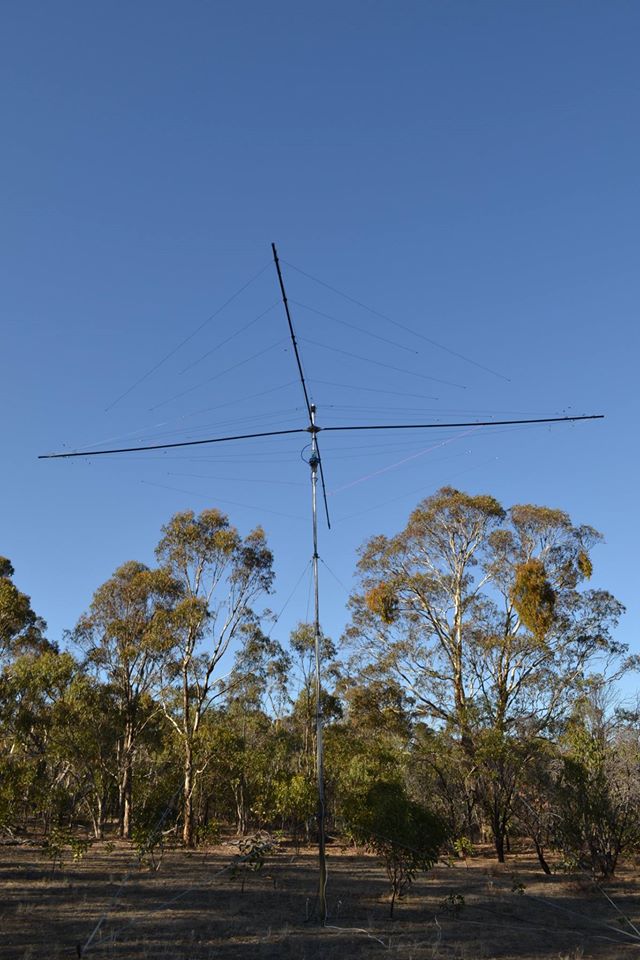 Next Weekend is the Oceania DX Contest, SSB section. Members of the AREG will be activating the Club Call sign VK5ARG for this event from the Para Wirra Recreation Park, north east of Adelaide. The OceaniaDX contest provides a great opportunity for Oceania stations to get on the air as there is lots of activity in our region. Whats more, the DX chasers from around the world will be actively looking for Oceania! Hopefully the propagation will favour VK5. More information on the OCDX contest can be found via the WIA website.
Next Weekend is the Oceania DX Contest, SSB section. Members of the AREG will be activating the Club Call sign VK5ARG for this event from the Para Wirra Recreation Park, north east of Adelaide. The OceaniaDX contest provides a great opportunity for Oceania stations to get on the air as there is lots of activity in our region. Whats more, the DX chasers from around the world will be actively looking for Oceania! Hopefully the propagation will favour VK5. More information on the OCDX contest can be found via the WIA website.
Contest Times: 08:00 UTC (17:30hrs ACST) Saturday 3 October to 08:00 UTC (18:30hrs ACST) Sunday 4 October 2015 (Yes Daylight savings starts this weekend too!)
AREG welcomes all amateurs with an 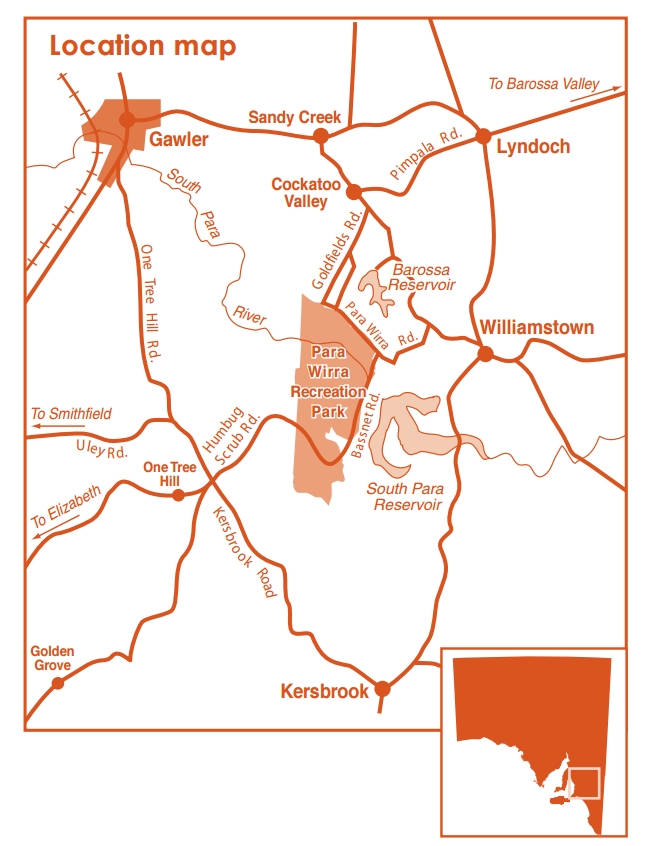 interest in portable field stations and contesting to come on up to the park and visit us over the weekend. Entry to the park will cost $10 / vehicle for a one time fee for the weekend.
interest in portable field stations and contesting to come on up to the park and visit us over the weekend. Entry to the park will cost $10 / vehicle for a one time fee for the weekend.
While the park closes at dusk, the radio club has sought and obtained special permission from the park rangers to remain in the park overnight. To find our operating location, enter the park from the main gate off Humbug Scrub Road, proceed past the the park office then past North Oval until you reach the toilet blocks, picnic shelters and open paddock at the end of the bitumen.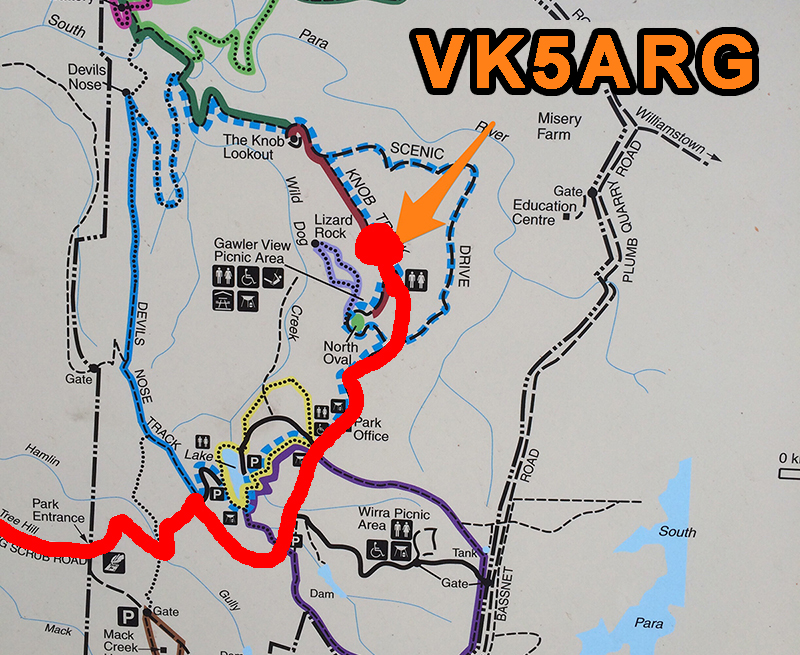
More than just contesting!
Saturday Afternoon prior to the contest AREG will be having a HF activity afternoon with a mixture of SSB and FreeDV operation on both 20m and 40m. This will be another great opportunity to test FreeDV. The VK5ARG team will be monitoring the FreeDV QSO finder, and posting regular blog updates as the afternoon evolves. Activity is planed from 1500-1700 Local time but may start earlier depending on interest.
Update: Friday 2nd October – Construction Begins….
The crew have arrived and are studying their blank canvas. Hmmm how to decorate this paddock with antennas? Lets put up the 40m antenna over here!


